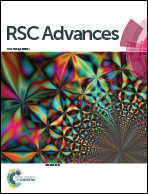A molten salt strategy for deriving a porous Si@C nano-composite from Si-rich biomass for high-performance Li-ion batteries†
Abstract
The preparation of a porous Si@C nano-composite from Si-rich biomass such as bamboo leaves is realized through baking the precursor at 400 °C in air, followed by reduction in molten AlCl3 at 200 °C. During this process, both Si and C components in those natural precursors are recovered as active materials. The obtained crystallized Si nanoparticles are embedded well in the pyrolyzed porous carbon matrix. As an anode for Li-ion batteries, the Si@C nano-composite exhibits long-term cycling stability with a capacity of 600 mA h g−1 at 2.0 A g−1 after 3700 cycles.


 Please wait while we load your content...
Please wait while we load your content...